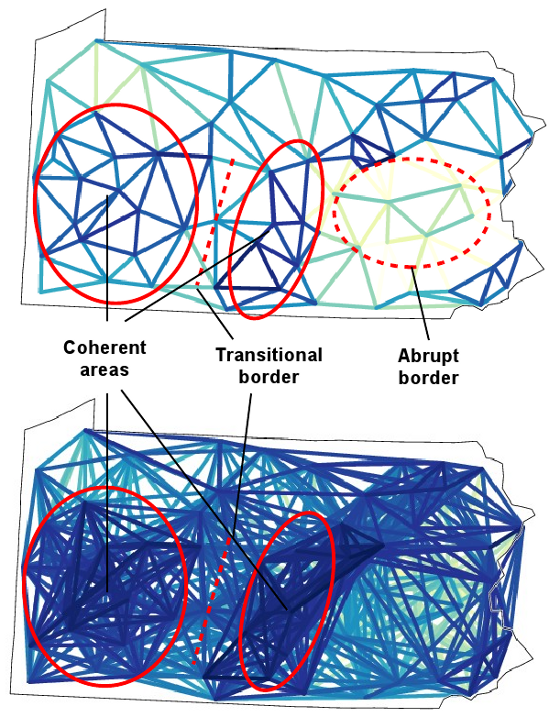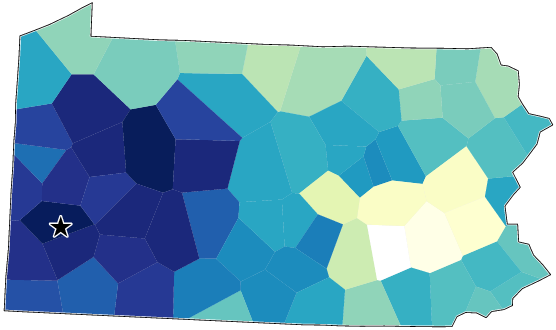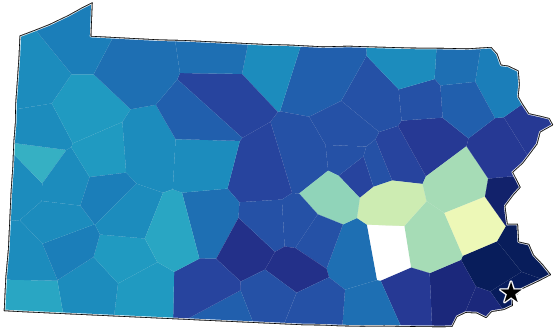
 |
Compare the two difference maps. In which areas are there large dialect differences? In which areas are the dialects very similar to each other? Are there abrupt dialect borders? |

Both of the maps display dark lines in the south-west of Pennsylvania, suggesting that the varieties spoken in this area are relatively similar to each other. Another coherent area is found in central Pennsylvania. Between these two areas there are lines which are neither very dark nor very light, suggesting a transitional border.
In eastern Pennsylvania there is an area with very large dialect differences. The dialect border around this area is an abrupt one, and also the dialects within this area are quite different from each other. The lower map shows that there are dialects to the north and to the south of this area that are more similar to each other than to the ones that are geographically in between.
 |
Compare the reference point maps of Pittsburgh and Philadelphia. What do these maps tell about the dialects? |


You can think of the reference point maps as “How different or similar would other dialects sound to a person in Pittsburgh/Philadelphia?”. For a person in Pittsburgh, the dialects in the surrounding area are all very similar to the Pittsburgh variety, but both in the north and in the east people sound quite different. For a person in Philadelphia only the geographically closest places have a pronunciation very similar to the one in Philadelphia. When you get further away dialects get gradually more and more different, but the most different sounding dialects are actually found in an area very close by, to the north-west of Philadelphia.